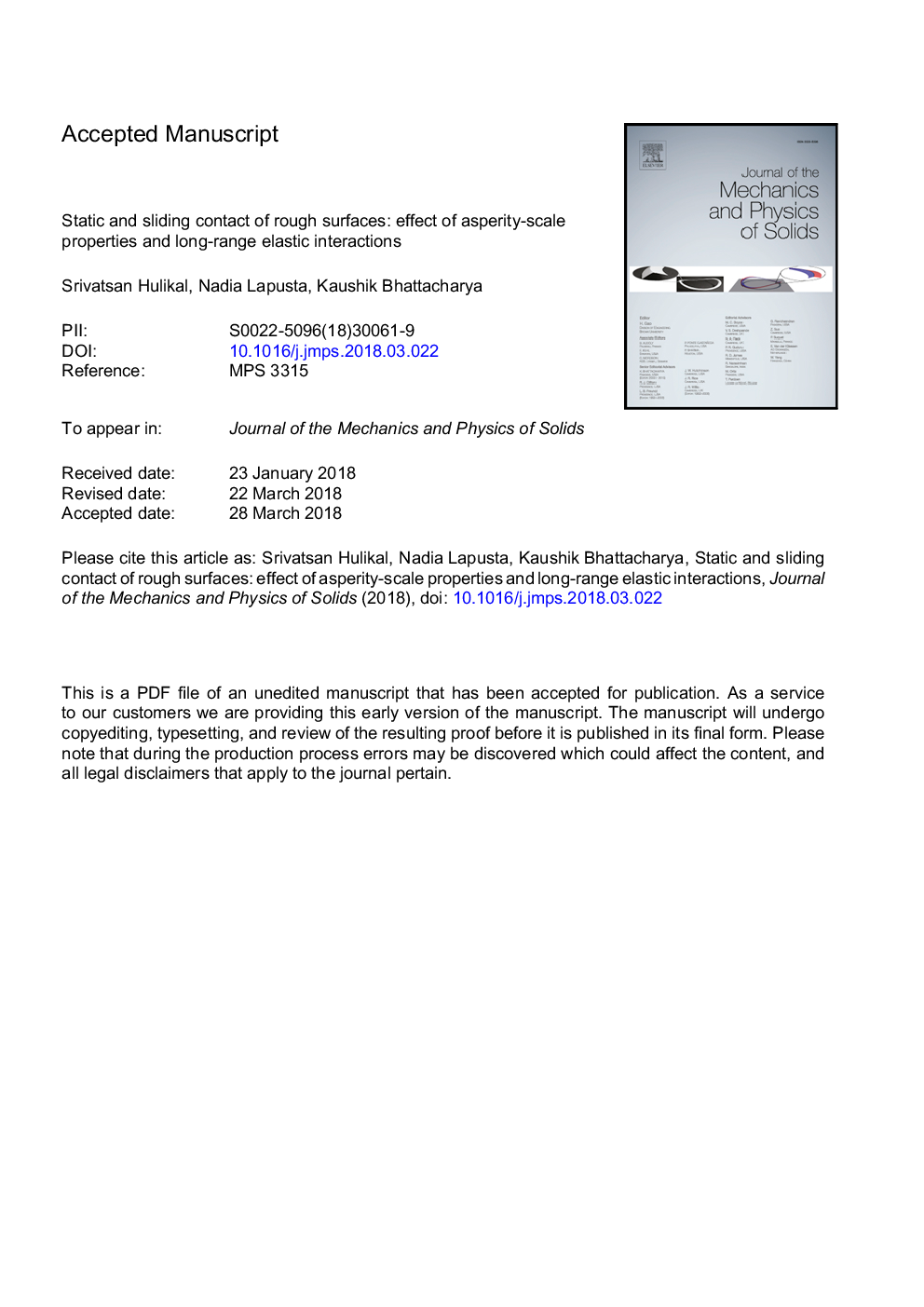| Article ID | Journal | Published Year | Pages | File Type |
|---|---|---|---|---|
| 7177420 | Journal of the Mechanics and Physics of Solids | 2018 | 34 Pages |
Abstract
Friction in static and sliding contact of rough surfaces is important in numerous physical phenomena. We seek to understand macroscopically observed static and sliding contact behavior as the collective response of a large number of microscopic asperities. To that end, we build on Hulikal et al. (2015) and develop an efficient numerical framework that can be used to investigate how the macroscopic response of multiple frictional contacts depends on long-range elastic interactions, different constitutive assumptions about the deforming contacts and their local shear resistance, and surface roughness. We approximate the contact between two rough surfaces as that between a regular array of discrete deformable elements attached to a elastic block and a rigid rough surface. The deformable elements are viscoelastic or elasto/viscoplastic with a range of relaxation times, and the elastic interaction between contacts is long-range. We find that the model reproduces the main macroscopic features of evolution of contact and friction for a range of constitutive models of the elements, suggesting that macroscopic frictional response is robust with respect to the microscopic behavior. Viscoelasticity/viscoplasticity contributes to the increase of friction with contact time and leads to a subtle history dependence. Interestingly, long-range elastic interactions only change the results quantitatively compared to the meanfield response. The developed numerical framework can be used to study how specific observed macroscopic behavior depends on the microscale assumptions. For example, we find that sustained increase in the static friction coefficient during long hold times suggests viscoelastic response of the underlying material with multiple relaxation time scales. We also find that the experimentally observed proportionality of the direct effect in velocity jump experiments to the logarithm of the velocity jump points to a complex material-dependent shear resistance at the microscale.
Related Topics
Physical Sciences and Engineering
Engineering
Mechanical Engineering
Authors
Srivatsan Hulikal, Nadia Lapusta, Kaushik Bhattacharya,
